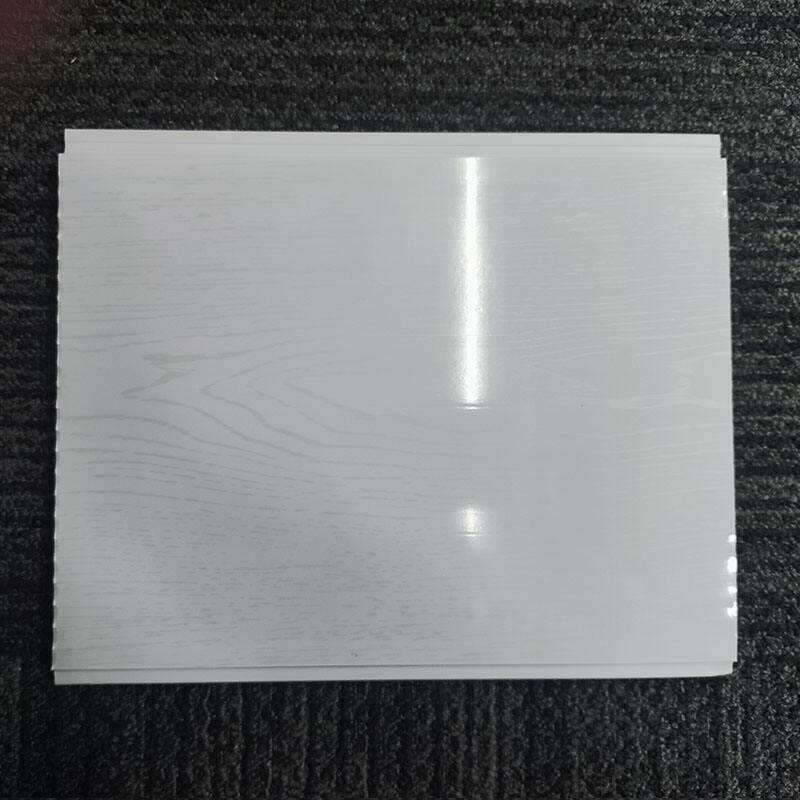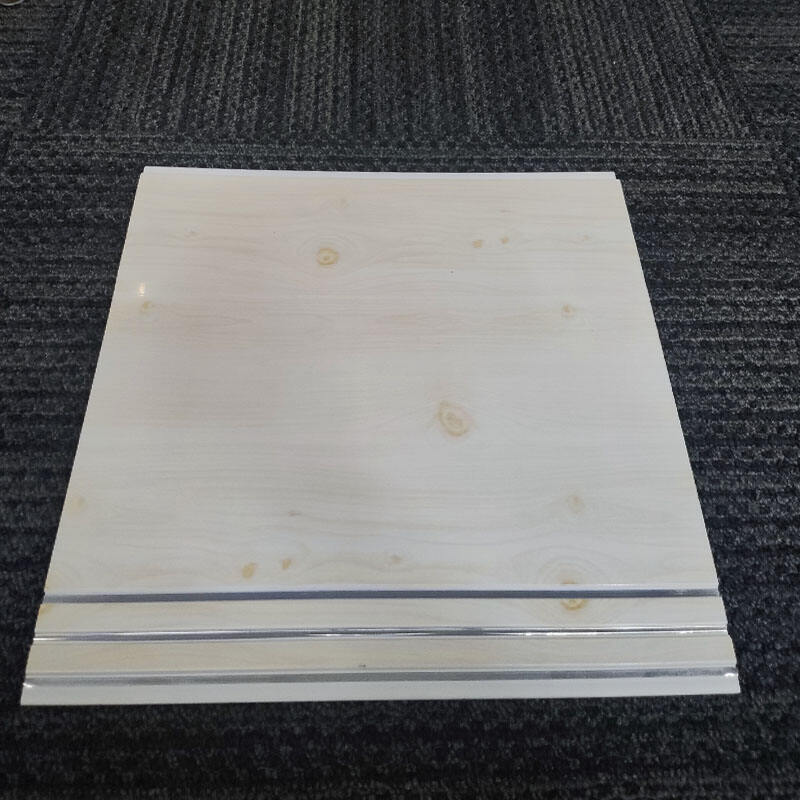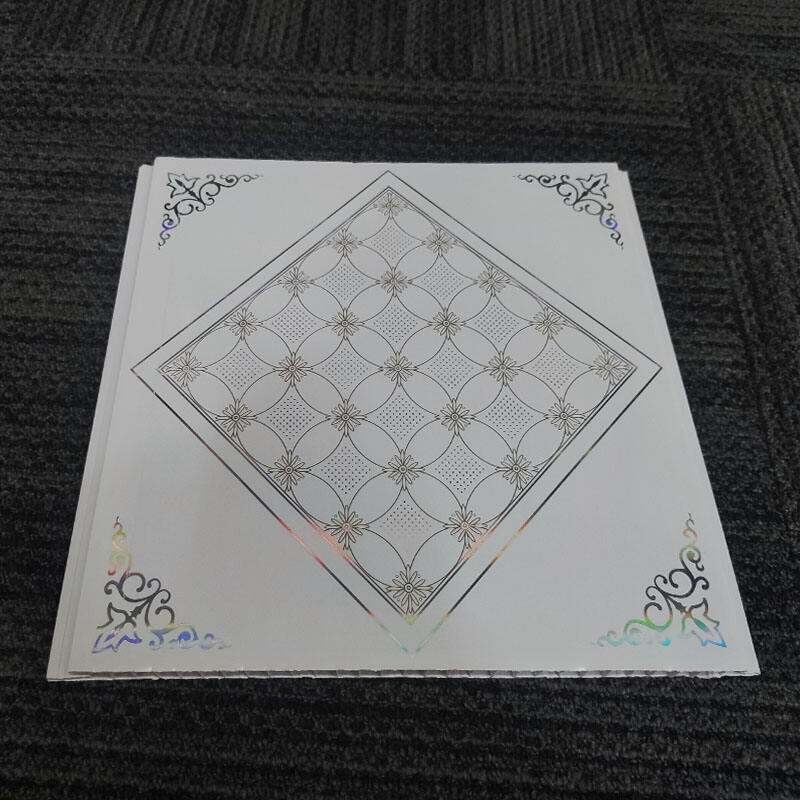روندهای بافتی در مدرن تالار سقف طراحیها
لمسهای چوبی و فلزی
افزودن المانهای چوبی و فلزی به موزاییک سقف ایجاد کننده کنتراستهای واقعاً جالبی است که فضاهای داخلی را برجسته میکند. چوب گرمی و شخصیتی را به فضاهای تجاری میدهد و بسته به اینکه سبک طراحی، روستایی شیک باشد یا فوقالعاده مدرن، به خوبی کار میکند. اما مؤلفههای فلزی چیزهای متفاوتی به این ترکیب میآورند، چرا که ظاهری تیز و مدرن دارند و همین امر باعث شده است که اخیراً تعداد زیادی از کسبوکارهای پیشرو این مسیر را در پیش بگیرند. بررسی آنچه در طراحی داخلی امروزه در حال وقوع است، نشان میدهد که چقدر ترکیب این مواد میتواند در طراحی فضاهایی مؤثر باشد که مردم دوست دارند در آن زمان بگذرانند. به عنوان مثال، ترکیب تیرهای چوبی با کاشیهای فلزی اخیراً بسیار مرسوم شده است چرا که چگونگی تأثیر متقابل آنها از نظر بصری بسیار جذاب است. بر اساس تحقیقات انجام شده از سوی ASID، تقریباً شش دهم از پروژههای طراحی سال گذشته شامل استفاده از ترکیبی از چوب و فلز در جایی از طرح بودهاند که نشان میدهد این رویکرد چقدر رایج شده است. رشد مداوم این سبک نشان میدهد که طراحان بیشتری در حال آزمایش با بافتهای مخلوط در سقفها هستند و فضاهایی خلق میکنند که چشم را جلب میکنند و در عین حال باعث بهتر شدن احساس کارکنان در محیط دفتر کار میشوند.
تابلوهای دیواری 3 بعدی به عنوان ویژگیهای سقفی
امروزه افراد بیشتری شروع به دیدن پانل های دیواری سه بعدی به عنوان چیزی فراتر از دیوارهای معمولی می کنند. آنها عمق و علاقه واقعی را به فضاهایی می رسانند که قبلاً وجود نداشتند. ما هم اکنون انواع سبک هایی داریم - شکل های هندسی جسورانه یا طرح های الهام گرفته از طبیعت را که حتی سقف های قدیمی خسته کننده را برجسته می کنند. مثلاً اون رستوران فانتزي مرکز شهر که اخیراً کل خونه شون رو بازسازی کرده صاحبان این پنل ها را روی سقف ناهارخوری قرار دادند و همه به نظر می رسید چقدر باحال است. فقط شگفت آور است که چگونه آنها چنین فضایی ساده را به چیزی واقعاً خاص تبدیل کردند. چه چیزی باعث می شه که اینقدر خوب کار کنند؟ روشنایی نقش مهمی در این مورد دارد. وقتی چراغ های درست قرار داده شده روی این سطوح بالا قرار می گیرند، سایه هایی ایجاد می کنند که بسته به زمان روز در اطراف اتاق می رقصند. برای هر کسی که خسته شده است از خیره کننده نگاه کردن به سقف های سفید تمام روز، این پانل ها یک جایگزین تازه را بدون شکستن بانک ارائه می دهند. آنها به طراحان اجازه می دهند با بافت و شکل بازی کنند در حالی که هنوز هم چیزها را کاربردی و زیبا نگه می دارند.

مواد دوستدار محیط زیست برای سقفهای پایدار
منابع بازیافتی و تجدیدپذیر
امروزه، پایداری نقش مهمی در طراحی کاشی سقف دارد، به خصوص از آنجایی که بسیاری از شرکت ها می خواهند زباله را کاهش دهند. استفاده از چیزهایی مثل چوب قدیمی که نجات داده شده یا پلاستیکی که قبلاً استفاده شده کمک می کند تا اثرگاه کربن را کاهش دهد و در واقع اتاق ها را بهتر به نظر می رسد. برای مثال چوب بازیافت شده را در نظر بگیرید این فضای را به آن ظاهر گرم و قدیمی می دهد که هرگز از مد خارج نمی شود. گزینه های پلاستیکی بازیافت شده متفاوت هستند، اگرچه تمایل دارند که آن فضای تمیز و معاصر را داشته باشند که در فضاهای اداری به خوبی کار می کند. تحقیقات نشان می دهد ساختمان هایی که با این مواد سبز ساخته شده اند، اثر بسیار کمتری در سیاره نسبت به روش های سنتی باقی می گذارند. علاوه بر این، گواهینامه هایی مانند LEED و Green Guard وجود دارد که اساساً به عنوان مهر تأیید برای محصولات پایدار عمل می کنند، که باعث می شود معماران و طراحان داخلی در هنگام مشخص کردن مواد، گزینه های دوستدار محیط زیست را انتخاب کنند.
پانلهای دیواری WPC برای دوام
پانل های دیواری چوبی پلاستیکی ترکیبی (WPC) در حال حاضر برای سقف بسیار محبوب هستند زیرا طولانی تر دوام می آورند و نسبت به بسیاری از گزینه های دیگر رطوبت را بهتر تحمل می کنند. اساساً ما در مورد ترکیبی هوشمند از مواد چوبی بازیافت شده و پلاستیک صحبت می کنیم، که برای هر کسی که می خواهد به طور پایدار بسازد، منطقی است. این پنل ها سالها بدون از هم پاشیدن در اطراف ما می مانند، به علاوه به کاهش اتلاف کمک می کنند، چون ما مجبور نیستیم آن ها را خیلی بیشتر تعویض کنیم. و اونم از اون که چقدر انعطاف پذیر به نظر می رسند صاحبان خانه ها هم مثل صاحبان کسب و کار ها عاشقشونن، چه برای چیزی خشن و بافت دار و چه برای چیزی صاف و صاف. وقتی به مواد مدرسه قدیمی مانند چوب معمولی یا دیوارهای گسیخته استاندارد نگاه می کنیم، WPC به طور کلی بهتر است. بعلاوه، وقتی نصب شد، تقریباً نیازی به نگهداری نیست. این ترکیب قدرت و نگهداری کم باعث می شود که آنها در دنیای ساختمانی امروز برجسته باشند.
راهکارهای سقف صوتی و عملکردی
فناوریهای کاشی جاذب صدا
کاشی های سقف صوتی واقعاً تفاوت را در ایجاد فضاهای که مردم واقعاً از حضور در آن لذت می برند، ایجاد می کنند. کنترل سر و صدا در مکان هایی مانند دفاتر مدرن، مدارس و بیمارستان ها که صداهای ناخواسته می تواند یک مشکل بزرگ باشد، بسیار مهم است. چه چیزی باعث می شود این کاشی ها اینقدر خوب کار کنند؟ آنها از مواد خاص ساخته شده اند و در طرح های مختلف وجود دارند که به جذب صدا کمک می کنند به جای اینکه اجازه دهند که در اطراف هر جا پرتاب کند. برای مثال، کاشی های پشم معدنی را در نظر بگیرید که اخیراً بسیار محبوب شده اند چون صدا را به طور موثر مدیریت می کنند. برخی از شرکت ها نیز شروع به استفاده از سیستم های ماژولار کرده اند که انعطاف پذیری بیشتری در پیکربندی های مختلف اتاق را فراهم می کند. معماران از تجربه می دانند که درمان خوب صوتی فضاهای معمولی را به فضاهای کاربردی تبدیل می کند. اما وقتی که کاشی ها را انتخاب می کنید، به یاد داشته باشید که به این فکر کنید که فضای شما واقعاً برای چه چیزی استفاده می شود و کاشی ها در کنار سایر عناصر طراحی چگونه به نظر می رسند. اگر می خواهیم محیط های داخلی موفق داشته باشیم، باید همیشه ملاحظات عملی با جذابیت بصری مطابقت داشته باشند.
گزینههای ضد آب برای مناطق مرطوب
کاشی های ضد آب در مکان هایی که همیشه رطوبت در اطراف آنها قرار دارد، شگفتی می کنند، به عنوان مثال حمام ها و آشپزخانه ها را در نظر بگیرید. وقتی با مشکلات مرطوبیت و رطوبت مداوم مواجه می شوند، خیلی بهتر از مواد معمولی مقاومت می کنند. تکنولوژی پشت کاشی های ضد آب خوب شامل مواد مانند کامپوزیت های PVC و پوشش های ویژه ای است که در واقع مانع از عبور آب می شود. پیمانکاران نصب این کاشی ها متوجه می شوند که حتی پس از سال ها در معرض آب بودن، قوی باقی می مانند. بسیاری از متخصصان ساخت و ساز گزارش می دهند که هنگامی که این کاشی ها نصب می شوند، هزینه تعمیرات را در آینده صرفه جویی می کنند، زیرا بسیار بیشتر از گزینه های استاندارد دوام می آورند. بعلاوه، هيچکس نميخواد با پليد که روي سقفش رشد ميکنه سر و کار داشته باشه. اضافه کردن کاشی های ضد آب به هر دو دلیل عملی منطقی است و در فضاهایی که کنترل رطوبت فقط بخشی از زندگی روزمره است، عالی به نظر می رسد.
نوآوریهای زیبایی: رنگ و الگو
الگوهای هندسی و هنری
اخیرا، ما شاهد یک فشار بزرگ به سمت الگوهای ژئومتریک و هنری کاشی سقف در دایره های طراحی داخلی بوده ایم. مردم عاشقشونن چون با هر سبک دکوراسیون ای خیلی خوب کار میکنن و بدون اینکه خیلی زیاد باشن واقعاً متمایز میشوند وقتی به درستی نصب شوند، این الگوها کاملاً حس فضای را تغییر می دهند، لایه های عمق و علاقه بصری را بدون اینکه همه چیز آشفته به نظر برسد، اضافه می کنند. در واقع، علمی وجود دارد که نشان می دهد چرا الگوهای خاصی بر خلق و خو ما تاثیر می گذارند. مثلث ها و مربع ها را به عنوان مثال در نظر بگیرید آنها تمایل دارند تا نظم را به یک اتاق بیاورند، به نوعی آن را مرتب تر احساس می کنند. از طرف دیگر، این اشکال جارو و ارگانیک یک فضای کاملا متفاوت ایجاد می کنند، تقریباً مانند قدم زدن به یک گالری هنری که در آن همه چیز به طور طبیعی با هم حرکت می کند. بسیاری از صاحبان خانه ها گزارش می دهند که وقتی در اطراف این نوع طرح ها هستند، احساس الهام بیشتری می کنند.
مثلاً هتل گرند پلازا در شیکاگو را در نظر بگیرید. سالنشان با نصب این کاشی های جیومتریک سقف کاملا تغییر کرد. اثرش فوراً بود مهمانان نتونستن کمک کنن اما متوجه الگوی فوق العاده ای شدن وقتی وارد شدند یک مقاله اخیر از طراحی داخلی امروز در واقع اشاره کرد که چگونه طراحان برتر شکل های هندسی را برای مدت زمان طولانی در اطراف خود می بینند زیرا از نظر زیبایی بسیار خوب کار می کنند. اما فقط به ظاهر مربوط نیست. این الگوها عملکرد واقعی را نیز به ارمغان می آورند. پانل های صوتی شکل گرفته شده در اشکال هندسی وظیفه دوگانه ای را انجام می دهند که هم سطح صدا را کنترل می کنند و هم جذابیت بصری را افزایش می دهند. حتی فضاهایی که بودجه محدودی دارند، راه هایی برای ترکیب عناصر هندسی کوچکتر از طریق کاغذ دیواری یا تنظیمات ساده قفسه پیدا می کنند. به نظر می رسد که کلید پیدا کردن تعادل درست بین شکل و عملکرد بدون اغراق است.

روکشهای فلزی برای شیکی مدرن
فرش فلزی سقف ها اخیراً بسیار محبوب شده اند، فضای اضافی و مدرن را به فضا می دهند. خیلی خوب به نظر می رسند و بلافاصله اتاق ها را با ارزش تر می کنند در حالی که این لمسه ای مدرن را اضافه می کنند که همه این روزها می خواهند. در واقع، گزینه های زیادی هم در دسترس است. انتخاب های کلاسیک شامل طلا و نقره است، اما بسیاری از مردم در حال حاضر برای رنگ های جسورانه تر مانند برنز یا حتی طلایی رز می روند. این قابلیت انعطاف پذیری به این معنی است که سقف های فلزی به خوبی کار می کنند، چه کسی طرح های ساده و تمیز را ترجیح دهد یا چیزی لوکس تر و دراماتیک تر. بعلاوه، چیزی که در مورد این پوشش ها متوجه شدم اینه که چطور با نور بازی می کنند. روش بازتاب آن باعث می شود اتاق های کوچک بزرگتر به نظر برسند و این فضای گرم و مهمان نواز را در سراسر فضا ایجاد کنند.
فضاهایی که دارای فرآوری فلزی هستند، بر اساس مشاهدات بازار، ارزش بیشتری را به خود اختصاص می دهند، که توضیح می دهد چرا آنها در خانه ها و همچنین دفاتر به خوبی کار می کنند. با نگاه کردن به آنچه که اخیرا در نمایشگاه های بزرگ طراحی داخلی اتفاق می افتد، روشن است که لهجه های فلزی به زودی از بین نمی روند. آنها فراتر از روند موقت به استفاده منظم در محافل طراحی معاصر منتقل شده اند. وقتی به طور خاص روی کاشی های سقف تزئینی اعمال می شود، این لمسه های فلزی بدون اینکه بیش از حد باشد، حس لوکس ایجاد می کند. بسیاری از طراحان گزارش می دهند مشتریان از آنها می خواهند جزئیات فلزی ظریف را که عمق را بدون بیش از حد فضای خود اضافه می کنند، درخواست کنند.
برای افزایش زیباییهای بصری، بررسی گزینههای موجود در پنلهای دیواری سه بعدی یا پنلهای دیواری wpc را جهت هماهنگی با طرحهای فلزی سقف در نظر بگیرید.
ترکیب روشنایی با سیستمهای کف سقفی
تکنیکهای روشنایی توکار و LED
روشنایی خوب وقتی که به طراحی کاشی سقف می آید، تفاوت زیادی ایجاد می کند. ترکیب چراغ های عمودی با تکنولوژی LED به ما یک ظاهر تمیز و در عین حال صرفه جویی در انرژی می دهد. فراتر از روشن کردن اتاق ها، این انتخاب های روشنایی در واقع نحوه دیدن سقف را بهبود می بخشند. چراغ های باز شده در دفاتر و خانه ها به خوبی کار می کنند، زیرا فضای زیادی را اشغال نمی کنند و با انرژی کمتری کار می کنند. وقتی طراحان چراغ ها را در اطراف مناطق خاصی قرار می دهند، شکل ها و بافت های جالب را در کاشی های سقف مدرن برجسته می کنند. ما نتایج شگفت انگیزی را در ساختمان های تجاری دیده ایم که در آن نوردهی درهم شکسته در کنار این پنل های دیواری سه بعدی یا پنل های صوتی می رود. این اثر عمق را به سطوح صاف اضافه می کند و یک فضای کاملا جدید در اتاق ایجاد می کند بدون نیاز به تزئینات فانتزی.
وقتی که نور به درستی با طرح های کاشی سقف ادغام شود، نتایج می تواند محیط های واقعاً خیره کننده ای باشد. به فضاهای اداری مدرن نگاه کنید که در آن نورها به جای رقابت با معماری، مکمل آن ها هستند. نکته کلیدی در اینجا برنامه ریزی کردن از پیش برای وسایل است که واقعا زیبایی را در کاشی سقف برجسته می کند، به ویژه زمانی که آنها دارای اشکال هندسی جالب یا الگوهای هنری هستند. این جزئیات تفاوت بزرگی در چگونگی درک مردم از اندازه و احساس اتاق ایجاد می کنند. افراد صنعت در مورد این ترکیب طراحی نورپردازی صحبت می کنند که اخیراً به شدت مورد توجه قرار گرفته است. طراحان در حال پیدا کردن انواع راه های خلاقانه ای برای گنجاندن این ایده ها بدون قربانی کردن صرفه جویی در انرژی هستند.
فهرست مطالب
-
روندهای بافتی در مدرن تالار سقف طراحیها
- لمسهای چوبی و فلزی
- تابلوهای دیواری 3 بعدی به عنوان ویژگیهای سقفی
- مواد دوستدار محیط زیست برای سقفهای پایدار
- منابع بازیافتی و تجدیدپذیر
- پانلهای دیواری WPC برای دوام
- راهکارهای سقف صوتی و عملکردی
- فناوریهای کاشی جاذب صدا
- گزینههای ضد آب برای مناطق مرطوب
- نوآوریهای زیبایی: رنگ و الگو
- الگوهای هندسی و هنری
- روکشهای فلزی برای شیکی مدرن
- ترکیب روشنایی با سیستمهای کف سقفی
- تکنیکهای روشنایی توکار و LED

